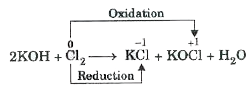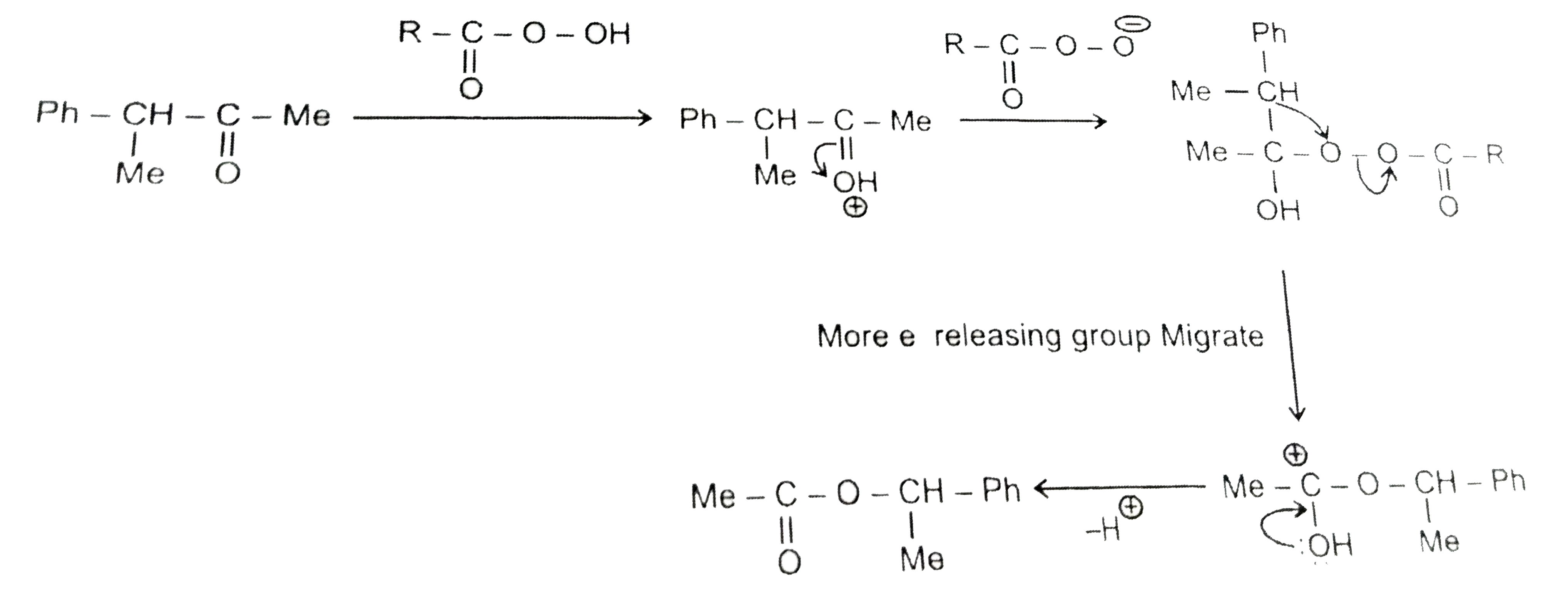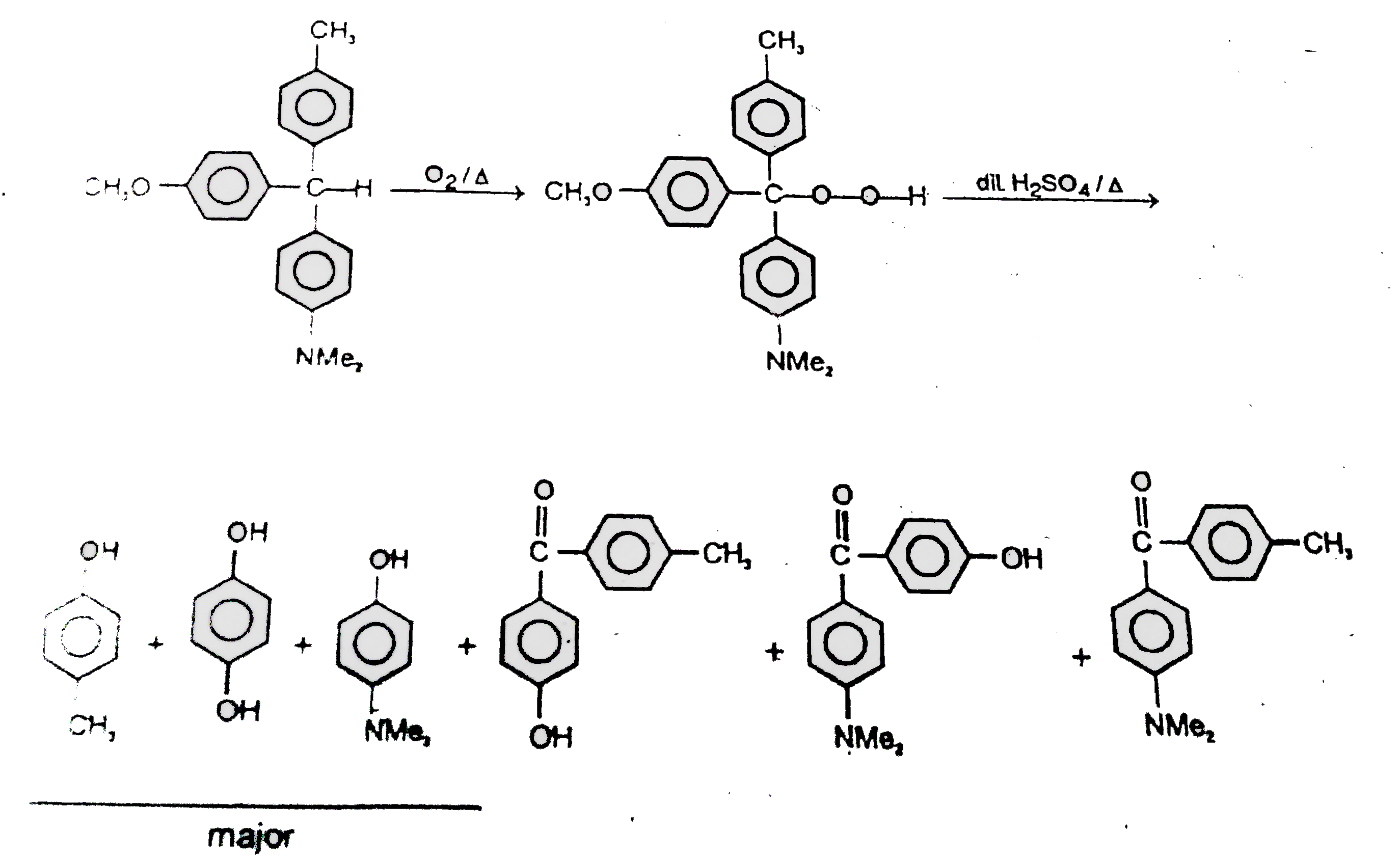Explore topic-wise InterviewSolutions in .
This section includes InterviewSolutions, each offering curated multiple-choice questions to sharpen your knowledge and support exam preparation. Choose a topic below to get started.
| 19651. |
What happens to the solubility of a gas in a liquid on increasing temperature. |
| Answer» SOLUTION :It DECREASES because the PROCESS is EXOTHERMIC. | |
| 19652. |
Which of the following is an anionic detergent . |
|
Answer» SODIUM STEARATE |
|
| 19653. |
Which of the oxide shows appearance like metallic copper ? |
|
Answer» `TiO_(2)` |
|
| 19654. |
When acetone undergoes reduction in presence of Zn -HCl / Hg, it is known as |
|
Answer» WOLF Kishner's REDUCTION |
|
| 19655. |
What happens when the bond formed between an enzyme and an inhibitor is a strong covalent bond ? |
| Answer» Solution :If a strong covalent bond is FORMED between the enzyme and the inhibitor which cannot be broken EASILY then the enzyme is blocked permanently. The body then degrades the enzyme-inhibitor COMPLEX and SYNTHESISES the NEW enzyme. | |
| 19656. |
The reduction potential is the tendency of an eleCtrode to |
|
Answer» SOLUTION pressure |
|
| 19657. |
Use of which of the following solvent in dry cleaning will result in less harm to ground water ? |
|
Answer» `Cl_(2)C=C Cl_(2)` |
|
| 19658. |
Which of the following is an analgesic? |
|
Answer» STREPTOMYCIN |
|
| 19659. |
Two half cell reactions are given as : (i) Fe_(aq)^(2+)+2e^(-) to Fe_((s)),E^(@)=-0.44" V " (ii) 2H_((aq))^(+)+(1)/(2)O_(2)(g)+2e^(-) to H_(2)O(l),E^(@)=+1.23" V " The E^(@) for the reaction Fe_(s)+2H^(+)+(1)/(2)O_(2)(g) to Fe_(aq)^(2+)+H_(2)O_(l) is |
|
Answer» `+1.67" V "` |
|
| 19660. |
Which one of the following reactions involves disproportionation ? |
|
Answer» <P>`2H_(2)SO_(4)+CutoCuSO_(4)+2H_(2)O+SO_(2)` 
|
|
| 19661. |
Which one of the following is used as catalyst in homogeneous and heterogeneous catalysis? |
| Answer» Solution :nano catalyst | |
| 19662. |
What will be the product of the following reaction Ph-underset(Me)underset(|)(C)-Me overset(RCO_(3)H)to ? |
|
Answer» `Ph-UNDERSET(Me)underset(|)(C)H-O-underset(O)underset(||)(C)-Me` 
|
|
| 19663. |
Which of the following oxy acid of sulphur has +6 oxidation state for sulphur? |
|
Answer» Sulphurous ACID |
|
| 19664. |
Which of the following is a state function and also an extensive property ? |
| Answer» Answer :A | |
| 19665. |
Which of the following will exhibit optocal isomerism ? |
|
Answer» `[Cr(EN)(H_(2)O)_(4)]^(3+)` |
|
| 19666. |
What happens: (a) By persistent dialysis of a sol . |
| Answer» SOLUTION :(a) COAGULATION of SOL TAKES PLACE . | |
| 19667. |
van.t Hoff factor for a dilute solution of sodium argento cyanide is: |
|
Answer» 2 |
|
| 19668. |
Value of standard electrode potential for the oxidation of Cl^(-) ions is more positive than that of water, even then in the electrolysis of aqueous sodium chloride, why is Cl^(-) oxidised at anode instead of water? |
| Answer» Solution :OXIDATION of `H_(2)O` to `O_(2)` is kinetically so slow that it needs some OVERVOLTAGE. Hence, `CL^(-)` is oxidized instead of WATER. | |
| 19669. |
When O_(3) is passed through an aqueous solution of KI, the pH of the resulting solution is |
|
Answer» 7 |
|
| 19670. |
What causes nitrogen to be chemically inert ? |
|
Answer» Multiple BOND formation |
|
| 19671. |
When a radioactive element emits an electron the daughter element formed will have |
|
Answer» Mass number one UNIT less |
|
| 19672. |
Which of the following is purified by vacuum distillation? |
|
Answer» Glycerine |
|
| 19673. |
Write structures of the compound whose IUPAC names are as follows : 1-Ethoxypropane |
| Answer» SOLUTION :`CH_3CH_2 -O-CH_2 CH_2 CH_3` | |
| 19674. |
Which of the following substances will precipitate the negatively charged emulsions ? |
|
Answer» KCI |
|
| 19675. |
When a metal is to be extracted from its ore, if the gangue associated with the ore is silica, then________. |
|
Answer» an ACIDIC FLUX is needed |
|
| 19676. |
Which of the following reactions of benzene proves the presence of three carbon-carbon double bonds in it : |
|
Answer» Formation of a triozonidewith ozone |
|
| 19677. |
What should be the correct IUPAC name for diethylbromomethane ? |
|
Answer» 1-Bromo-1,1-diethylmethane |
|
| 19678. |
What is the order of reaction if the unit of rate constant is litre mol^(-1) sec^(-1)? |
| Answer» SOLUTION :If the UNIT of rate constant is litre`MOL^(-1) sec^(-1)`,then.it is SECOND order REACTION | |
| 19680. |
Which of the following compounds will have the highest melting point and why ? o - dichlorobenzene , m - dichlorobenzene and p - dichlorobenzene . |
| Answer» Solution :p- DICHLOROBENZENE will have the highest melting point because it FITS into CRYSTAL lattice BETTER than other isomers . | |
| 19681. |
Which of the following is a disinfectant and in a diluted form act as an antiseptic as well? |
|
Answer» Aspirin |
|
| 19682. |
Which may be consumed in the elemental from by human beings ? |
|
Answer» Zn |
|
| 19683. |
Which will have greater molar conductivity and why? Sol A. 1 mol KCl dissolved in 200 cc of the solution. Sol. B. 1 mol KCl dissolved in 500 cc of the solution. |
| Answer» SOLUTION :Solution B will have greater MOLAR conductivity because `wedge_(m)=kappaxxV`. With DILUTION, `kappa` decreases but V increases much more so that product increases. | |
| 19684. |
Which one of the following compounds is most reactive towards nucleophilic addition |
|
Answer» `CH_(3)CHO`  The lower reactivity of ketones over aldehydes is due to `+I` effect of the alkyl group. The aromatic aldehydes and ketones are LESS reactive than their ALIPHATIC analogues. This is due to the `+R` effect of the benzene ring. From the above information, it is clear that INCREASING order of the nucleophilic addition reaction in the following compound will be, `PhCOPh lt PhCOCH_(3) lt CH_(3)COCH_(3) lt CH_(3)CHO` |
|
| 19685. |
The group 16 elements are characterised by the electronic configuration: |
|
Answer» `ns^2 np^4` |
|
| 19686. |
Which of the following isomerism is not possible for complexes having molecular formulae? (I) Pt(SCN)_(2)*3PE t_(3), (II) CoBr*SO_(4)*5NH_(3) (III) FeCl_(2)*6H_(2)O |
|
Answer» Optical (II) `[CoBr(NH_(3))_(5)]SO_(4)`, Exhibits only hydrate isomerism. (III) `[Fe(H_(2)O)_(6)]Cl_(2),` Exhibits only hydrate isomerism. |
|
| 19687. |
Which of the following statements regarding halogens is not true ? |
|
Answer» Halogens ACT as strong oxidizing agents |
|
| 19688. |
The transition element iron belongs to ul"4d-series of transition elements." |
| Answer» SOLUTION :3d-series of TRANSITION ELEMENTS. | |
| 19689. |
The van't Hoff factor (i) for a dilute aqueous solution of the strong electrolyte barium hydroxide is |
|
Answer» 2 `Ba(OH)_(2)rarr Ba^(+2)+2OH_((AQ))^(-)` Van.t HOFF FACTOR = total number of ions present in solution i = 3 |
|
| 19690. |
Total number of organic products formed (major , minor all). |
Answer» 
|
|
| 19691. |
What does the part '6,6' mean in the name of nylon-6, 6? |
| Answer» Solution :It means that both the MONOMERS USED in condensation polymerization LEADING to the formation of nylon-6, 6 CONTAIN six carbons, each. | |
| 19692. |
Which one of the following has the regular tetrahedral structure ? |
|
Answer» `BF_(4)^-` |
|
| 19693. |
What is the total number of compounds having at least one bridging oxo group among the molecules given below ? N_(2)O_(3),N_(2)O_(5), P_(4)O_(6),P_(4)O_(7),H_(4)P_(2)O_(5),H_(5)P_(2)O_(10),H_(2)S_(2)O_(3),H_(2)S_(2)O_(5). |
Answer» SOLUTION :  
|
|
| 19694. |
Which one of the following is an example of pseudo first order reaction ? |
|
Answer» Acid HYDROLYSIS of ESTER |
|
| 19695. |
Which one out of S_(N)1 and S_(N)2 reactions is more susceptible to steric effect and which one is susceptible to electronic effect? |
| Answer» Solution :`S_(N)1` REACTION is more susceptible to electronic EFFECT while `S_(N)2` reaction is more susceptible to steric effect. | |
| 19696. |
When chlorine is passed through propene at 400^(@)C, which of the following is formed? |
|
Answer» PVC |
|
| 19697. |
What is the role of these as food additives? i) Sodium benzoate. ii) Aspartame. |
|
Answer» SOLUTION :(i) Food preservative. (ii) ARTIFICIAL SWEETENING agent. |
|
| 19699. |
Which will give silver mirror test with Tollen's reagent? |
|
Answer» `Me-C-=C-H` |
|
| 19700. |
Which of following is an oligosaccharide? |
|
Answer» Glucose |
|